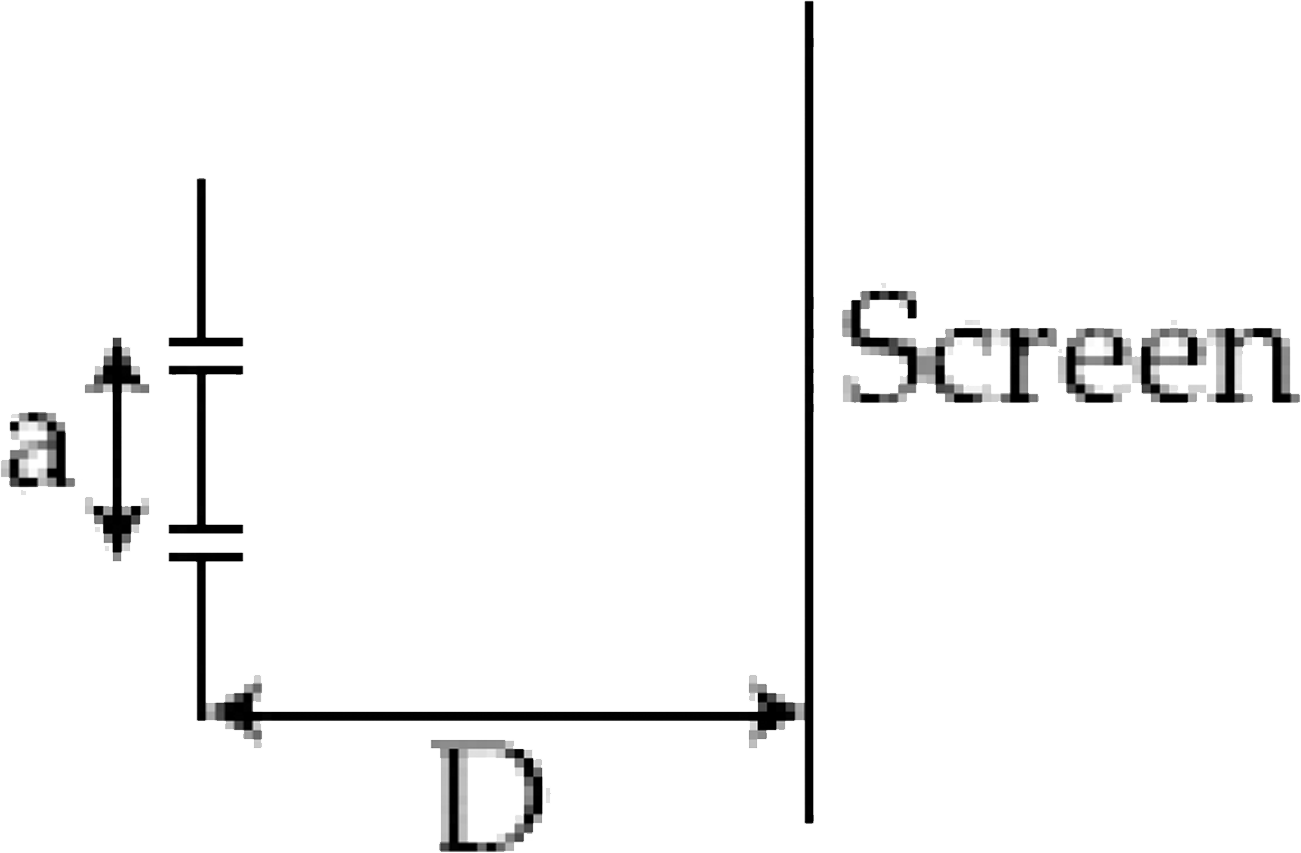Phase difference at the central point changes by π/3 when as thick film having a refractive index 1.5 and thickness 0.4μm is placed in front of upper slit of a YDSE set up. If the wavelength (in nm) of the light used is 600 k, find k.
The correct Answer is:2
To solve the problem step by step, we will follow the logical flow of the information provided in the question.
Step 1: Understand the phase difference formula
The phase difference (ΔΦ) is given by the formula:
ΔΦ=2πλ⋅Δx
where Δx is the path difference and λ is the wavelength of the light used.
Step 2: Substitute the given phase difference
We know from the problem that the phase difference at the central point changes by π3. Therefore, we can set up the equation:
π3=2πλ⋅Δx
Step 3: Simplify the equation
We can simplify the equation by canceling out π from both sides:
13=2λ⋅Δx
This can be rearranged to find Δx:
Δx=λ6
Step 4: Relate Δx to the thickness and refractive index
The path difference Δx can also be expressed in terms of the thickness (T) of the film and its refractive index (μ):
Δx=(μ−1)⋅T
Given that μ=1.5 and T=0.4μm=0.4×10−6m, we can substitute these values:
Δx=(1.5−1)⋅(0.4×10−6)=0.5⋅(0.4×10−6)=0.2×10−6m
Step 5: Set the two expressions for Δx equal
Now we equate the two expressions for Δx:
λ6=0.2×10−6
Step 6: Solve for λ
To find λ, we multiply both sides by 6:
λ=6⋅(0.2×10−6)=1.2×10−6m
Converting this to nanometers (1 m = 109 nm):
λ=1.2×103nm=1200nm
Step 7: Relate λ to k
We are given that λ=600k. Therefore, we can set up the equation:
600k=1200
Dividing both sides by 600 gives:
k=1200600=2
Final Answer
Thus, the value of k is:
2
The phase difference (ΔΦ) is given by the formula:
ΔΦ=2πλ⋅Δx
where Δx is the path difference and λ is the wavelength of the light used.
We know from the problem that the phase difference at the central point changes by π3. Therefore, we can set up the equation:
π3=2πλ⋅Δx
We can simplify the equation by canceling out π from both sides:
13=2λ⋅Δx
This can be rearranged to find Δx:
Δx=λ6
The path difference Δx can also be expressed in terms of the thickness (T) of the film and its refractive index (μ):
Δx=(μ−1)⋅T
Given that μ=1.5 and T=0.4μm=0.4×10−6m, we can substitute these values:
Δx=(1.5−1)⋅(0.4×10−6)=0.5⋅(0.4×10−6)=0.2×10−6m
Now we equate the two expressions for Δx:
λ6=0.2×10−6
To find λ, we multiply both sides by 6:
λ=6⋅(0.2×10−6)=1.2×10−6m
Converting this to nanometers (1 m = 109 nm):
λ=1.2×103nm=1200nm
We are given that λ=600k. Therefore, we can set up the equation:
600k=1200
Dividing both sides by 600 gives:
k=1200600=2
Thus, the value of k is:
2
Topper's Solved these Questions
Similar Questions
In YDSE when slab of thickness t and refractive index μ is placed in front of one slit then central maxima shifts by one fringe width. Find out t in terms of λ and μ.
View SolutionA thin film of refractive index 1.5 and thickness 4×10−5 cm is illuminated by light normal to the surface. What wavelength within the visible spectrum will be intensified in the reflected beam?
View SolutionTwo slits S1 and S2 illuminated by a white light source give a white central maxima. A transparent sheet of refractive index 1.25 and thickness t1 is placed in front of S1. Another transparent sheet of refractive index 1.50 and thickness t2 is placed in front of S2. If central maxima is not effected, then ratio of the thickness of the two sheets will be :
View SolutionA transparent glass plate of thickness 0.5 mm and refractive index 1.5 is placed infront of one of the slits in a double slit experiment. If the wavelength of light used is 6000A∘, the ratio of maximum to minimum intensity in the interference pattern is 25/4. Then the ratio of light intensity transmitted to incident on thin transparent glass plate is
View SolutionLight of wavelength 500nm is used to form interference pattern in Young's double slit experiment. A uniform glass plate of refractive index 1.5 and thickness 0.1mm is introduced in the path of one of the interfering beams. The number of fringes which will shift the cross wire due to this is
View SolutionThe central fringe shifts to the position of fifth bright fringe, if a thin film of refractive index 1.5 is introduced in the path of light of wavelength 5000Å. The thickness of the glass plate is
View SolutionThe figure shows a Young's double slit experimental setup. It is observed that when a thin transparent sheet of thickness t and refractive index μ is put front of one of the slits, the central maximum gets shifted by a distance equal to n fringe widths. If the wavelength of light used is λ, t will be :

View SolutionA thin mica sheet of thickness 4×10−6 m and refractive index (μ=1.5) is introduced in the path of the light from upper slit. The wavelength of the wave used is 5000Å The central bright maximum will shift
View SolutionA glass slab of thickness 3cm and refractive index 1.5 is placed in front of a concave mirror of focal length 20cm. Where should a point object be placed if it is to image on to itself?
View SolutionIn YDSE, slab of thickness t and refractive index μ is placed in front of any slit. Then displacement of central maximu is terms of fringe width when light of wavelength λ is incident on system is
View Solution
